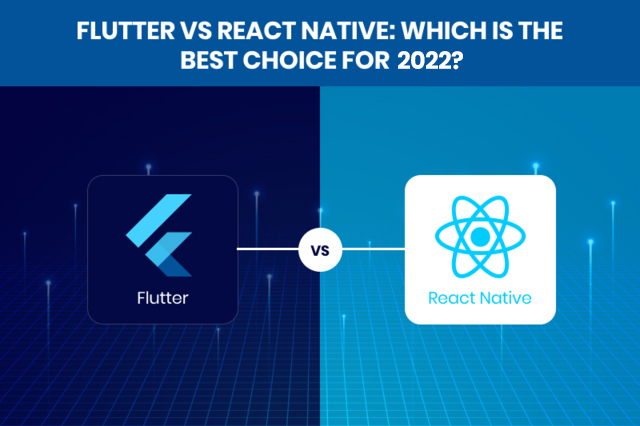Last Updated on March 20, 2024 by admin
Introduction
With the emergence of smartphones and web apps, the phenomenon of digitization has grown tremendously. All commodities may be accessed through a native platform with a single tap. Everything is easily accessible on these smartphone platforms, from product purchases to making inquiries, boosting the consumer experience with an appealing user interface.

The reality that 92% of mobile users prefer web apps to web browsers is reason enough for major corporations to emphasize on mobile application development to avoid missing out on opportunities to gain consumers through numerous platforms.
Native applications are definitely superior on smartphones. Because people with technical expertise can grasp this better, graphic transitioning needs less duration for UI rendering than cross-plat forming. The impact, therefore, will be almost imperceptible to the average user. As a response, they start weighing the benefits and drawbacks of Flutter vs. React.
All native frameworks give access to the IS kernel. Native frameworks, on the other hand, are written in a variety of programming languages, based on the operating platform and gadget.
As an outcome, Flutter and React Native are especially popular cross-platform app development frameworks in 2022, and their influence is growing.
Flutter
Flutter is a Google-developed interactive framework for designing and generating native apps for Android and iOS that was eventually launched in December 2018. This framework blends creative ease with utility while maintaining a uniform aesthetic appeal. Flutter is a fair and democratic framework with a programming language called Dart that was supposed to replace JavaScript.
Flutter allows businesses to create cross-platform apps with a unified interface, enabling a single programme that can be used on desktop, mobile, and the web. Flutter-based applications are more accessible and easier to operate, making them a popular alternative for businesses with extensive foundation requirements.
Functions of Flutter
The structure of Flutter is made up of a base module, the flutter engine, and interfaces. Flutter’s methodology to app development is distinct in that it employs declarative UI writing, which necessitates starting from the end. As a result, before starting to build any element, the consumer must have a good understanding of what sort of UI it will be. To build the whole user interface, developers can employ a set of components.
Hire Dedicated Flutter App Developer from India may also adopt Flutter to specific item widgets that can be integrated with existing ones. Flutter application development also provides a number of software packages that provide exposure to Firebase and Redux database servers in order to improve user engagement by enhancing app features.
The preceding are some of the most common application contexts:
Smartphone MVP implementation
- Development of applications, as well as hardware and operating system functions
- Elevated widgets with a user interface that may be customised.
- Plugins with basic logic for sophisticated operating systems.
- Apps with a high level of data interaction have been deactivated.
React Native
React Native is a well-known JavaScript-based smartphone platform that allows programmers to construct dynamically produced Android and iOS apps from a unified interface. Facebook made it available as a fully accessible venture in 2015. After few years, react-native has grown to popularity as one of the most prevalent mobile app development tools, with notable examples including Walmart, Instagram, Facebook, Sound Cloud, and Skype. Because businesses only need to develop code once, they save substantial funds and efforts.
Functions of React Native
React native combines JavaScript and JXL (unique code resembling XML). This architecture allows you to deal with native app units as well as JavaScript processes. This merge development tool’s code doesn’t really generate web views. It rather makes use of modules and native viewpoints. By connecting JavaScript and native threads, React-native enables two – way communications. The most popular apps created using this framework are:
- Apps with hardly any cross-platform functionality.
- Apps feature a simple user interface.
- Prototypes of apps evolved significantly.
- Application modules that can be reused.
- Asynchronous APIs are used for implementation disposal.
Updated components of Flutter and React Native
- Flutter’s components
- Flutter Web compatibility is now accessible in the Beta Channel.
- Plugins and features have indeed been enabled.
- The Flutter SDK has already been enhanced to make it easier to incorporate Flutter into existing iOS and Android apps.
- API modifications
- React Native components
- Lean Core- Used to reduce software size by isolating optional components into their own sources.
- Turbo Modules- For improved native component implementation.
- redesigned user interaction component
- Flutter/React Native Assists Corporations in Implementing Ideas
Perks of Flutter vs. React Native
- Flutter’s Attributes
Rapid re-setting the platform allows the developer to observe the modifications required in real-time without altering the program’s configuration; this saves time and enhances effectiveness and competitiveness.
- Widgets containing a huge amount of information
Flutter’s major prominent factor is the use of out-of-the-box applications, which ensures a standardized design and production technique. It also comes with a collection of strong Google-powered widgets that generate high-quality code and exceed rival expansive platforms.
- Flawless Integration
It performs well together with Objective C or Swift on iOS, and it performs well together with Java on Android. It also means that there is no need to rewrite the program.
- Code swap
Because the prepared programmes may be moved between platforms, they are suitable for MVP development.
- Customized layout
Flutter includes:
- Skia is a visuals system.
- An elevated component.
- Users may utilise the expansive visual engine to develop custom-designed apps for Android and IOS platforms.
- Immediate shipment
Because validation is only performed for a unified platform, this functionality saves so much time throughout implementation by permitting for short iteration cycles.
- React Native Attributes
Native code representation React Native uses the host framework to show APIs naturally, eliminating the requirement for CSS or HTML code.
- Absolute effectiveness
React Native communicates with native Android and iOS modules and even creates native API code without interfering with them. Furthermore, react Native improves performance by using threads that are different from native APIs and UIs.
- Environment
The site’s appearance is dynamically generated with each phase change, relying to a rich platform and UI frameworks.
- Troubleshooting
React Native has comprehensive debugging tools and error reporting.
- On-the-fly refilling
Even if the programmer is not recompiling the software or inserting new code into a live application, hot refreshing includes altering the code base in order to check the codes.
- User interface simplification and runtime environment
React Native offers a scalable design and architecture that allows developers to swiftly upgrade their apps. Additionally, it has a basic and less complicated user interface, and it uses a software interface to eliminate unnecessary pieces in order to achieve proper application scheduling.
Differentiation of Flutter & React Native
- Acceptance
As shown in a survey, Flutter has exceeded React Native as one of the most preferred merge mobile technology. The user base of React Native has decreased from 42% in 2020 to 38% in 2021. Hire Dedicated React Native developers is presently the most prominent in perspective of popularity. Flutter, on the other hand, is trying to catch up and isn’t further behind React Native.
- Illustrations and architecture
Despite the fact that React Native and Flutter possess excellent visual characteristics, they employ different approaches to drawing interface design. React Native inherits native visual elements and appearance, providing in a seamless, customizable experience. Unless the operating system is changed, the app portions will be modified to maintain the same feel and appearance as other native apps.
In Flutter, the app will look the same independent of the OS version or device model. Mobility and other aspects remain unchanged unless particularly upgraded. Flutter makes it simple to implement a single neutral style throughout all gadgets, minimizing project scope.
- Extensible
When analysing the desirability of Flutter vs. React Native, Flutter outperforms React Native in terms of reliability, scalability, expenditures or Cost to develop an app, app functionality, and other factors. Nonetheless, when it comes to improving a well-performing mobile app, React Native distinguishes out.
Conclusion
When several factors are considered, there is no apparent superiority between Flutter and React Native. Because each project is different, selecting the best platform is entirely dependent on your project specifications and business requirements. In overall, Flutter is the best solution for complex applications and projects that require native programming. React Native is ideal for projects that may benefit from plug-and-play components. Bear in mind that each application is distinct, and you must Hire a dedicated web & mobile app developers and examine each one separately.
Apart from this, if you are interested to know more about Augmented Reality Glasses then visit our Small Businesses category









